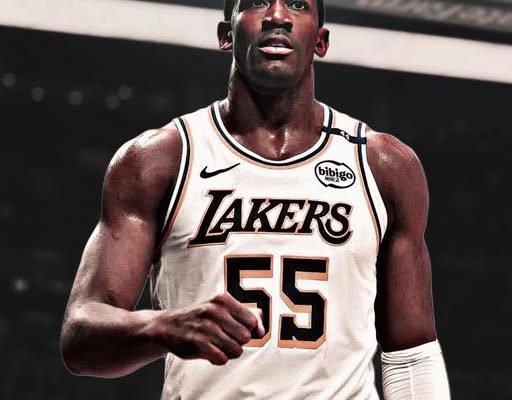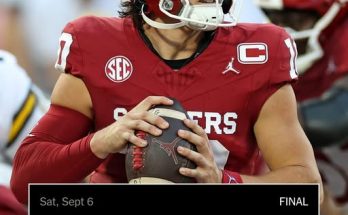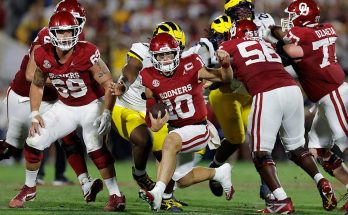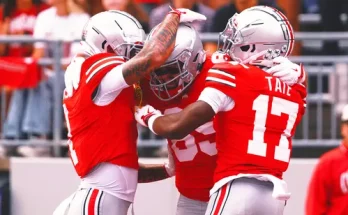The Los Angeles Lakers have made a roster move that, while not earth-shattering on the surface, signals their intent to recalibrate and focus on more fluid, versatile frontcourt depth as they waived 25-year-old center Trey Jemison III. Jemison, a former UAB standout who carved out an unlikely spot in the league through hard work, size, and rim protection potential, is now looking for his next opportunity after appearing in 22 games for the Lakers during the 2024-25 NBA season.
For Jemison, the journey to the NBA has never been smooth or predestined. He went undrafted in 2023, despite showing considerable promise as a big man with a defensive-first mentality and good touch around the basket. His 7-foot frame, strength, and mobility had earned him G League looks and eventually summer league invites, which he parlayed into a two-way deal with Los Angeles. Through perseverance and a commitment to maximizing every opportunity, he saw action in 22 regular season games this past season, averaging 2.6 points and 2.8 rebounds per game in just over 10 minutes per contest. Though his playing time was limited, Jemison was able to post an impressive 62% field goal percentage, a testament to his efficiency in the paint and ability to convert the few touches he got into reliable production.
Jemison’s time with the Lakers came during a transitional period for the franchise. With an aging LeBron James, a retooling supporting cast, and questions surrounding long-term roster construction, the Lakers were constantly tweaking and reevaluating the players around their superstar duo of LeBron and Anthony Davis. Jemison, given his physical tools and interior presence, filled a niche role as a backup center who could provide solid minutes when Davis sat or shifted to power forward. But despite his effectiveness in spot duty, the numbers game and the Lakers’ emphasis on flexibility ultimately caught up to him.
The Lakers’ decision to waive Jemison likely reflects a broader strategic push to prioritize wings and stretch bigs who can better complement their spacing and pace-oriented offense. Jemison, while a competent defender and lob threat, lacked the perimeter skill set that modern offenses demand from frontcourt players. He wasn’t a floor spacer, didn’t have the mobility to guard multiple positions effectively in space, and was limited to drop coverage schemes on defense. In a league that increasingly values versatility over specialization, Jemison found himself as a square peg in a round hole, especially on a team that often operates with a small-ball ethos when Davis is at the five.
Still, Jemison’s contributions should not be underestimated. In his limited action, he often brought energy, rim protection, and a willingness to do the dirty work that doesn’t always show up in the box score. Whether setting bone-crushing screens, contesting shots in the paint, or battling on the glass, Jemison consistently showed a professional approach and a commitment to team basketball. Teammates and coaches alike praised his attitude, work ethic, and locker room presence, and those intangibles will likely keep him on the radar for teams seeking low-cost depth with character.
Jemison’s waiver could also open the door for other Lakers frontcourt players or free agent pickups to assert themselves in training camp and throughout the rest of the offseason. With the team reportedly exploring “consolidation” trades and examining options to create a more balanced, skilled roster around LeBron and Davis, cutting Jemison frees up a roster spot and some cap flexibility. While his salary was minimal, every marginal move matters in today’s tightly managed cap environment, especially for franchises chasing title contention.
His departure also underscores the harsh realities of life at the back end of an NBA roster. Players like Jemison often live on the fringe of job security, one week earning meaningful minutes and the next facing the business side of basketball. There are only so many roster spots and so many minutes to go around, especially on a team with championship aspirations and an ever-urgent win-now mandate with LeBron still in town. Jemison may well catch on elsewhere, particularly with a rebuilding team looking to give young bigs developmental opportunities or a contender needing emergency depth for the stretch run.
Jemison’s college pedigree, particularly his time at UAB where he averaged over 8 points and nearly 9 rebounds per game in his senior year while anchoring the defense, speaks to his capacity to anchor the interior and play within himself. His game isn’t flashy, but he provides the kind of traditional center attributes—size, rebounding, rim protection—that still matter situationally, especially when matched up against bruising post players or in need of a defensive anchor during non-starter minutes.
Moreover, Jemison’s positive locker room presence could prove valuable in another setting. Many NBA teams value glue guys, particularly in the 10th to 15th man spots—players who stay ready, keep practices competitive, and bring a professional attitude without demanding touches or spotlight. Jemison fits that mold perfectly and may soon find himself in another NBA training camp come September, or potentially overseas where he could thrive in a bigger role.
His release might also speak to a philosophical shift in how the Lakers want to build their roster around their superstars. Davis has long been reluctant to play full-time center, but the modern NBA increasingly demands that he do so for the Lakers to optimize their lineup spacing and tempo. That reality minimizes the need for another traditional big, especially one who doesn’t stretch the floor. The Lakers may now pivot toward more hybrid forwards or rangy wings who can defend multiple positions and hit open threes. It’s a pattern many contending teams follow, and Jemison, while useful in a more conventional system, doesn’t fit that evolution.
From a player development standpoint, it’s also worth considering that Jemison, at 25, is older than many of the young developmental prospects NBA teams tend to invest in long-term. Though he still has upside, the perception of his ceiling may be more limited than that of a 19 or 20-year-old prospect. That’s not a knock on Jemison’s abilities or effort—it’s a reflection of how NBA front offices often prioritize long-term potential over present-day readiness when filling out their benches.
It’s possible that the Lakers considered giving Jemison additional time to develop, particularly in the G League or on a two-way deal, but ultimately determined that his skill set wasn’t aligned with the system they want to implement under head coach J.J. Redick, who is expected to emphasize ball movement, spacing, and defensive switching. In such a framework, Jemison might have struggled to find a consistent role, and the Lakers may have opted to go in a different direction early enough in the offseason to allow him to pursue other opportunities elsewhere.
For Jemison, the road ahead is uncertain but not without promise. He has shown enough in flashes—his rebounding instincts, willingness to set hard screens, and presence in the paint—to earn another look, whether in the NBA, the G League, or internationally. His efficiency in limited touches is a selling point, as is his size in an increasingly undersized league. Players of his ilk—low-usage, effort-based bigs—often find careers in niche roles that extend far beyond initial setbacks, especially when paired with high character and durability.
The story of Trey Jemison III with the Lakers may be brief, but it’s also emblematic of the NBA’s ever-rotating door for role players and hopefuls. For every star that commands headlines, there are dozens of Jemison-type players fighting to stay in the league, proving their worth in every practice, every late-game mop-up minute, every injury fill-in opportunity. They are the heartbeat of a team’s depth, the unheralded workers who sacrifice and compete without the glory. While his release may not dominate national sports talk, it’s a moment that captures the grind of professional basketball—and the relentless chase for belonging that defines the journey for so many.
In the coming weeks, as training camps open and rosters begin to crystallize, Jemison will likely get workouts and offers. Teams needing a big-bodied defender, or simply a steady pro to round out their bench, could see value in bringing him on. He’s been through the battles, knows the system of a high-pressure franchise, and has kept his head down and his energy up even when his number wasn’t called consistently. That resilience—more than any one stat—might be the ticket that gets him back in the league.
Until then, Trey Jemison remains another example of what it takes to survive in the NBA’s margins. His time in Los Angeles may be over, but his career is far from done. And for a player who’s beaten long odds to make it this far, the next chapter is one worth watching.



